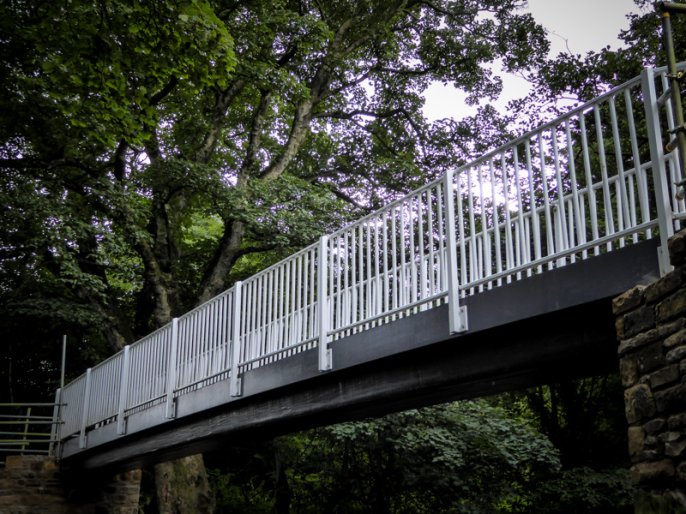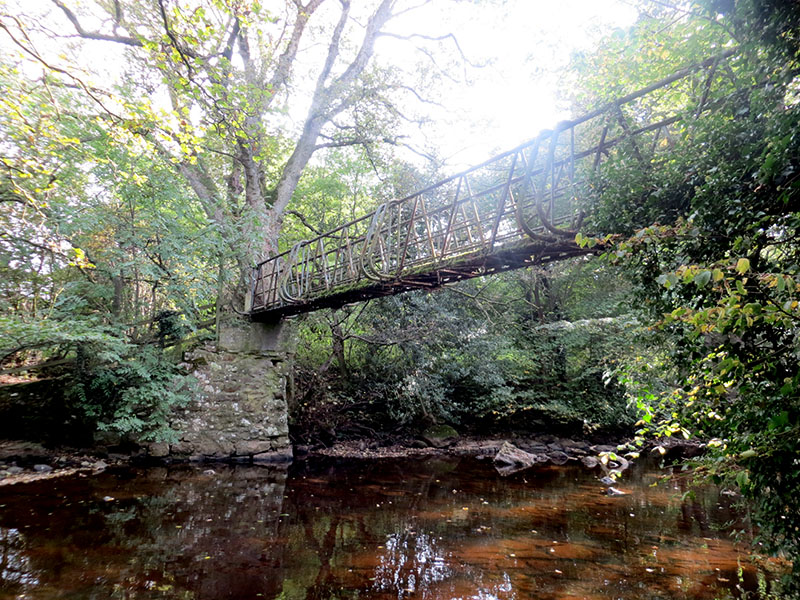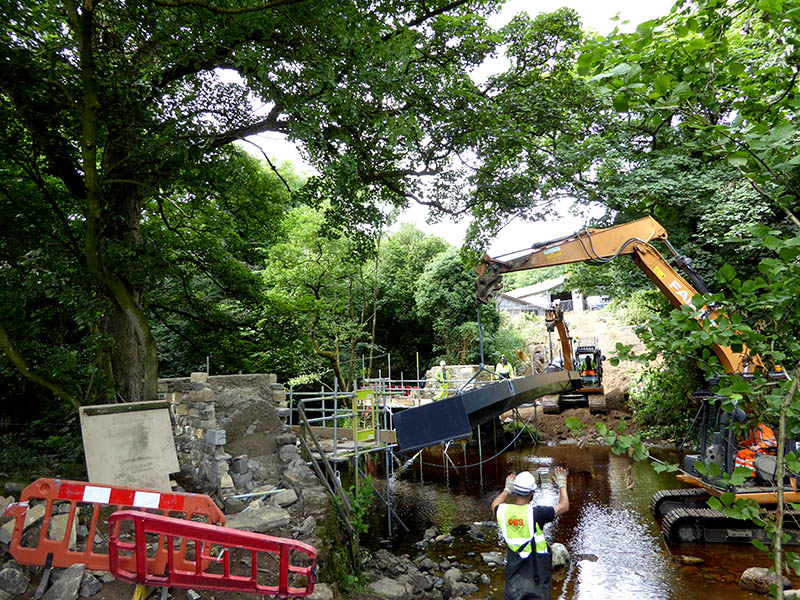Bird Ridding Footbridge

 North Yorkshire CC
North Yorkshire CC 15m long
15m long 1.2m wide
1.2m wideThe original Bird Ridding Footbridge was a 15m long bridge close to Coverham in the District of Richmondshire, North Yorkshire. The bridge crossed the River Cover and was removed late 2015 due to continued use even after being closed as the bridge being deemed unsafe to serious corrosion issues. The bridge was a single span steel bridge built which was built on a concrete abutment 1m deep which was then sat on a stone wall.

In February 2016 North Yorkshire County Council tendered a design and supply project for a replacement FRP Bridge, which was won by Lifespan Structures.
Design
The contract required that the bridge should be designed to the requirements BD90/05 and relevant Eurocodes. The proposed bridge was based on a resin infused FRP system utilising Infracore technology. The span was 14.7m with a 200m longitudinal radius, a total section depth of 600mm and a clear width of 1.2m between parapets. The FRP bridge deck allows for the installation of a 1.15m high, powder coated, galvanised steel parapet to be installed on the outside end of the deck.
The outputs from the design process were;
- The maximum deflection under a characteristic live load of 5kN/m2 was 34mm, less than span/300.
- The minimum natural frequency was 5.0 Hz, Greater or equal to 5Hz.
- All strains were kept below allowable limits under ULS load cases.
- Bolted connections shall accommodate an allowance of at least +/-7mm for thermal expansion.


Manufacturing and Installation
The installed bridge deck weighs 3500kg and the galvanised powder coated steel parapet weighs 1050kg. Access to the remote location meant that installation method needed to be considered, and the lightweight nature of the FRP deck allowed the bridge to be lifted into position using tracked mechanical excavators.

The FRP bridge deck was lifted into place and the handrail installed insitu. A slip resistant surfacing material is applied to the wear surface of the bridge during the manufacturing process.




